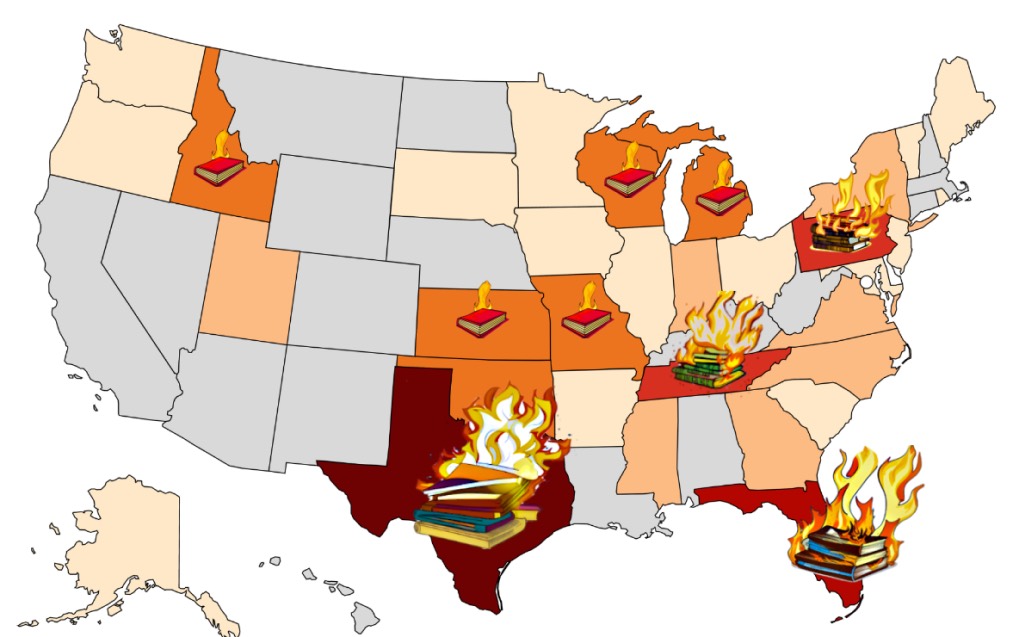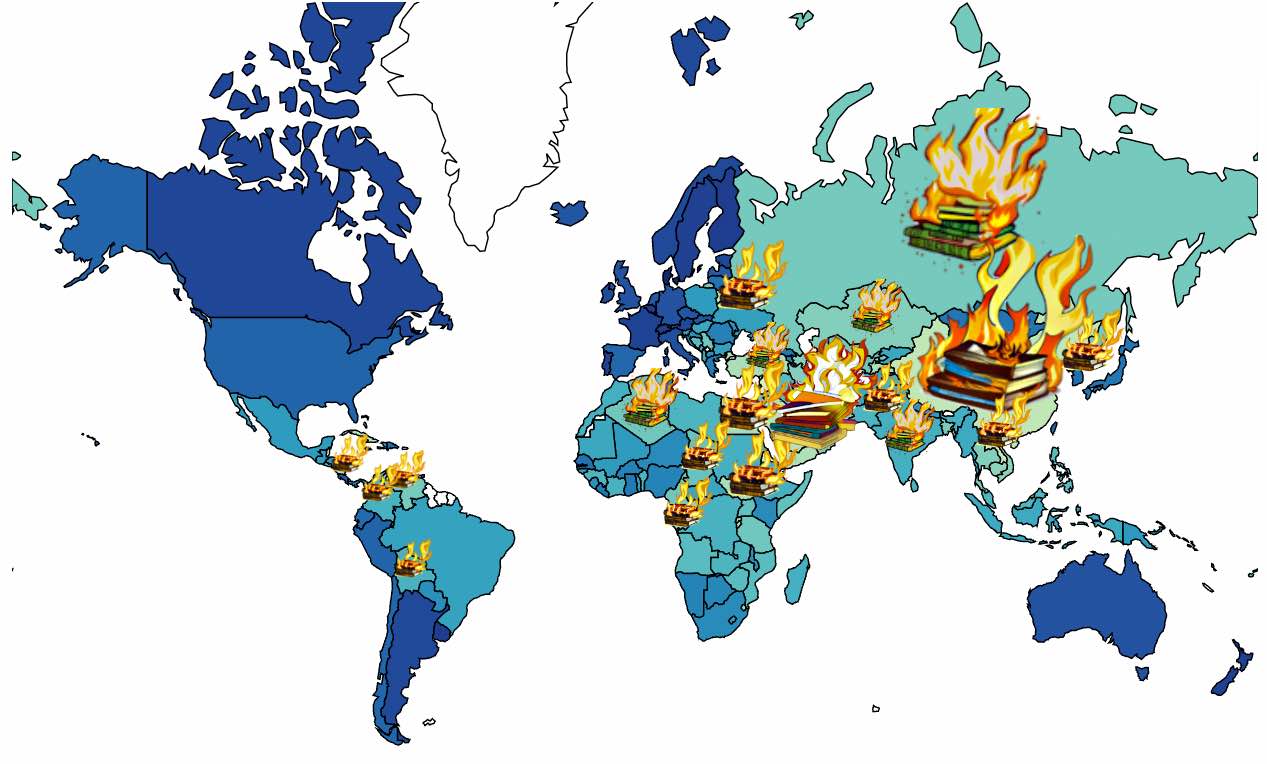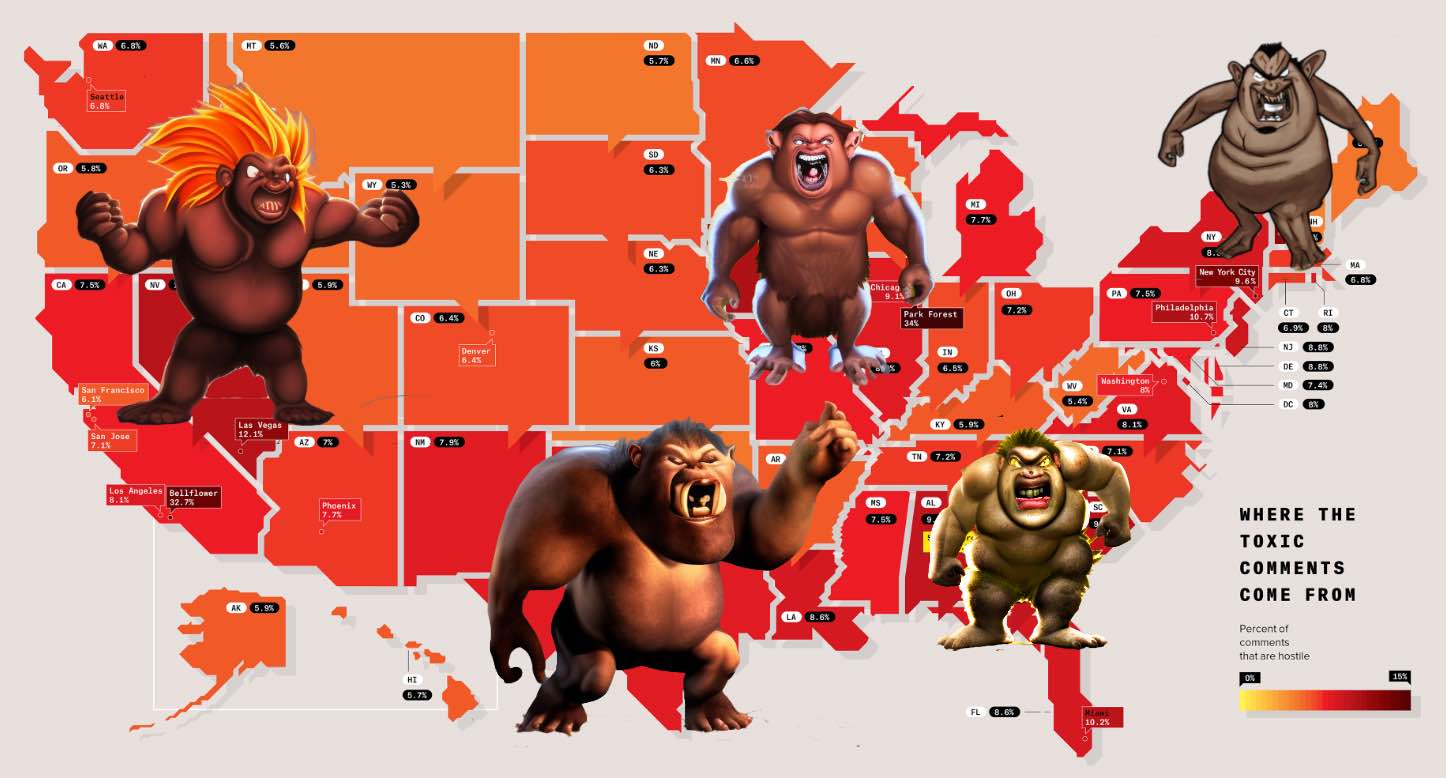These are heady times for bowdlers and censors of all stripes. Not only is there a surge in demand by culture warriors on the far right and ultra-woke left to revise histories, lived experiences, and everyday language they deem unsavory or inconvenient, but there are great new tools to get the job done. This post looks at the market for ‘bowdler-tech’, a fast-growing specialization within the broader repression-tech industry.1 Follow-on posts look at nifty gadgets for bowdlerizing at scales never seen before.
To ‘bowdlerize’ means to remove or alter parts of a text deemed too immoral, vulgar, irreverent, or politically inconvenient for ordinary folk to see. It takes but a small liberty to extend the term to other kinds of art. The word honors Thomas Bowdler2, an English editor who published a “family-friendly” version of Shakespeare’s works, with all the bits his blue-stockinged sister thought too juicy removed.
The David affair
A conservative Florida school whose curriculum emphasizes classical Western civilization fired its principal because an art teacher showed a picture of Michelangelo’s ‘David’, a Renaissance masterpiece.3 “Pornographic”, a parent complained, so the school’s board invoked Ron DeSantis’ Parental Rights in Education law to cleanse the school. “We agree with everything the governor is doing in the educational arena,” said Barney Bishop, chair of the school’s board. “We support him because he’s right.”4
DeSantis’ new education policies empower right wing parent groups to act as local censorship boards. Typical of their actions was banning a graphic novel version of the Diary of Anne Frank5 from district high school libraries for being too true to Anne Frank’s original text.6
In such culture wars, the far right and far left can find common ground. Consider the case of Hamline University, a liberal arts college that terminated an art history lecturer for showing a famous 14th century Islamic painting of Muhammed.
But firing one principal or teacher at a time won’t stop the corrupting influence of Renaissance nudity on young minds, or whitewash the Black experience, or erase Jewish or Palastinian history, or make non-binary people disappear, or update insufficiently woke language in children’s classics. To really clean up, the modern Republican governor or ultra-woke SJW needs weapons of mass cultural cleansing.
Where there is market demand, the tech industry supplies.
Where is the market for bowdler-tech?
Tech company leaders want to serve a clear demand, and they know that demand is driven by the desire to solve an irksome problem. Here, the problem is how to repress a freedom or an aspect of culture that a powerful and entitled person doesn’t like. Of course, there are always powerful and entitled people. But from time to time, a wave of popular support makes one unusually bold. Those are times of opportunity for repression-tech. We live in such a time. Let’s see where the demand is.
Pen America has published a handy map that shows where the most books are being banned in US schools.7 This map corresponds well to where zealots have led book-burnings8 or conservative school boards have clamored for them.9

School book banning in America; map source: Pen America; burning book overlay: the author
Now, burning printed books is a notoriously polluting way to suppress smutty words and inconvenient truths. Advanced technology offers more efficient alternatives, so demand for bowdler-tech should burgeon in the book-banning states. A plus: a long cycle of increasing freedom of expression in the US has depleted the repression arsenals of its various governments. Now that Texas and Florida are trying to bring back the Comstock Act,10 they’ll want to rearm.
But by world standards, the US doesn’t ban many books or smash much art. Organizations like the libertarian Cato Institute track the global market for repressive technologies of all kinds.11 Manufacturers of armaments and ’less lethal’ police weapons find their reports useful for identifying their target markets. The same should be true for bowdler-tech companies. The map below is based on a repression heat map by the World Population Review:

Map source: World Population Review – Countries with Freedom of Speech in 2020; burning book overlay: the author
From this, you’d think China, Russia, Iran, and North Korea—the CRIN states, called the ‘axis of evil’ by traditional republicans in Washington and lauded as role models by their MAGA colleagues—offer more sales opportunities than the US does. But there are problems with the international market for repression-tech.
-
The biggest book-banners have domestic suppliers of repression-tech. For example, China uses home-grown AI to monitor its entire population and punish those who step out of line.12
-
Advanced repressive countries have eliminated freedom of expression already. There isn’t much bowdlering left to do.
-
The less advanced repressive regimes don’t have the money to invest in advanced bowdler-tech. For them, bonfires are good enough.
-
Exporting advanced bowdler-tech from the US might run afoul of export control laws.
Then there are the social media trolls who bully authors and artists into adopting their special interest language, whether appropriate to the art’s context or not. For example, the trolls who scream that feminism is trans-exclusionary, or fulminate that teachers must submit to Sharia when a Muslim student is present, or howl that a person whose skin is blue should be no-platformed for writing or painting a character whose skin is green. People who take the idea of respect to the next level. They’re harder to pin down on a map, though WIRED.com and Disqus tried, as shown below.13

Map source: Wired magazine, Trolls across America. The troll figures are the author’s addition.
Trolls have less geographical or state allegiance than book-banners. But there are a lot of trolls – according to the Wired/Disqus study, 25% of all social media posters are jerks. And a lot of them are in America, where wealth gives more people time to be trolls. How to reach them?
-
Sell the trolls technology like ChatGPT to construct ’truthy’ arguments from ‘alternative facts’. That way, the troll never has to understand the issue they’re complaining about, which saves time.
-
Sell bowdler-tech to the publishers and producers and gallery directors who fear the disapproval of trolls.
Since alternate facts are available at low cost, trolls have no motivation to spend money on bowdler-tech, so I feel that the profit is in the second approach. Make it easy for the timid publisher / producer / director to bowdlerize the artist’s work without the artist having a say in it.
This analysis tells me that the richest, most accessible markets for bowdler-tech are the US Republican-led states that are banning books and cutting freedoms, and content publishers cowed by demands to revise art according to the identity politics of the loudly aggrieved.
The rise of bowdler-tech!
New technologies are making it possible to bowdlerize more efficiently than ever before. In subsequent posts, I’ll take a closer look at some great examples. Stay tuned!
-
I’ve seen mention of ‘repression tech’ on the Web. ‘Bowdler-tech’ is made up. In case it isn’t obvious, this and follow-on posts are satirical. ↩︎
-
Thomas Bowdler has his own Wikipedia page ↩︎
-
Artnet news, A Florida School Focused on Classical Western Civilization Fired a Principal Over a Lesson Showing Michelangelo’s ‘David’ ↩︎
-
The Independent, School principal resigns after showing Michelangelo’s David in class ↩︎
-
New York Times, review of ANNE FRANK’S DIARY The Graphic Adaptation ↩︎
-
Truthout, Florida School District Bans Graphic Novel Version of Anne Frank’s Diary ↩︎
-
Pen America, Banned in the USA: The Growing Movement to Censor Books in Schools ↩︎
-
The Guardian, Tennessee pastor leads burning of Harry Potter and Twilight novels ↩︎
-
Vanity Fair, Conservatives Are Just Openly Endorsing Book Burning Now. ↩︎
-
New York Times, The Hideous Resurrection of the Comstock Act ↩︎
-
Some organizations that track freedom of expression around the world: CIA World Factbook, Cato Institute, Freedom House, World Population Review ↩︎
-
New York Times, How China is Policing its Future; Bulletin of the Atomic Scientists, China’s high-tech surveillance drives oppression of Uyghurs ↩︎
-
WIRED.com, Trolls Across America ↩︎
